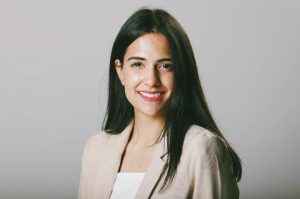
Disney II Magnet Elementary’s initiative with local chefs to provide a better understanding of nutrition for students continues to make progress with Chicago Public School officials.
Shari Berland, an advocate member for Disney II’s Interim Advisory Council, said the school is in conversation with CPS to get the initiative underway. CPS is considering Disney II, in the Irving Park neighborhood, as a partner for the program. She said that the program is also looking at six other schools within the CPS system to pilot the program.
“Our goal is to expose underserved kids to nutritional options with a curriculum in culinary arts,” Berland said. She said that schools with a high population of underserved kids are the main target for the initiative, and Disney II is drumming up support for the program with teachers, parents and school officials throughout Chicago.
The program, called Pilot Light, is a group of local chefs working to change students’ outlook on food by teaching healthier food options during demonstrations and lessons.
Pilot Light members collaborate with teachers in each grade to incorporate their lessons with the already existing curriculum. Presentations and cooking demonstrations, like the one held Feb. 21 at Disney II, use a hands-on approach in order for students to experience first hand what’s being taught. It is a matter of relating a certain period of time discussed in history lessons with specific food practices in order to make the demonstrations more relevant to what is being taught in the classroom, said Lauren Golanty, an administrator for the program.
“Food is a part of our collective culture and understanding of the world,” said Golanty. “We focus on food as its own study, sort of food education, and try to take what we see as applicable to relate to what’s already being studied and wrap that in.”
Ellen Wartella, professor of human development and social policy and communication and psychology at Northwestern University, said that American children are not eating healthfully and placing them in the middle of an obesity crisis. Foods high in calories, salt and fat and low in nutrients are being marketed to children, which goes against dietary recommendations, said Wartella. Schools “absolutely need a new curriculum” to inform students of proper nutrition, she said.
Mara Lidacis, communications and outreach manager for Namaste Charter School in Chicago’s Bridgeport neighborhood, agrees that the current curriculum in public schools, including CPS, is lacking when it comes to nutrition education. Lidacis said the Namaste has been integrating health and wellness into its curriculum since it originally opened back in 2004. Namaste students have to participate in an hour of physical activity every day and attend a class where teachers are required to teach different aspects of health, including nutrition and family wellness.
“Students respond really well to it,” Lidacis said. “Recently we’ve been having kids try the foods and have gotten great feedback. They enjoy learning about the new foods because our population is 80 percent low-income, any many don’t have the opportunity.”
Lidacis continued that Namaste has more than 50 visitors each year to see their practices in action, including representatives from CPS, various school districts throughout the state of Illinois and other policy makers. Currently, Namaste is conducting research to connect students’ performance with the study of nutrition. Lidacis said that Namaste students are already outperforming peer institutions by 13 percentage points on the ISAT.
“I do think that [nutrition] is something that’s very necessary to integrate into the curriculum,” Lidacis said. “There is the connection to what the students are eating and what they are learning in the classroom.”
Although changing curriculums to include nutrition education may benefit students, it is not always easy to implement.
Cecily Relucio Hensler, director of the elementary program at the University of Chicago’s Urban Teacher Education Program, said that teachers generally have a variety of initiatives they are asked to implement and certain programs run the risk of becoming a fad that isn’t sustainable. Without the proper level of expertise, additions to the curriculum become one more thing that teachers have to learn how to put into effect throughout the duration of the course, according to Hensler. New programs such as Pilot Light, however, create learning opportunities for educators even if they aren’t prioritized.
“I think that pilots make an opportunity to present it and learn from it to implement it on a larger scale,” Hensler said.
Pilot Light originally started their initiative with Disney II a year ago. Matthias Merges, one of the founders of Pilot Light, has two children who attend Disney II. When the group members originally decided to form, Golanty said they thought it was best to benefit from the relationship that was already established with the school and the principal. Golanty added that Disney II is outfitted for people to come in and engage students and had already been raising awareness about nutrition in the school.
Officials from Chicago Public Schools could not be reached to comment on the program.







Be First to Comment